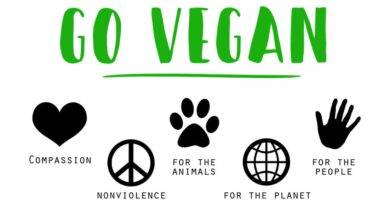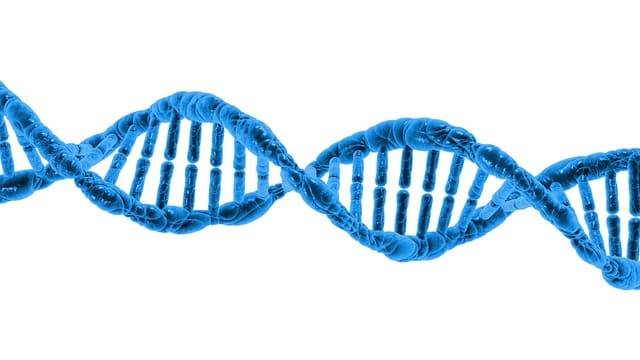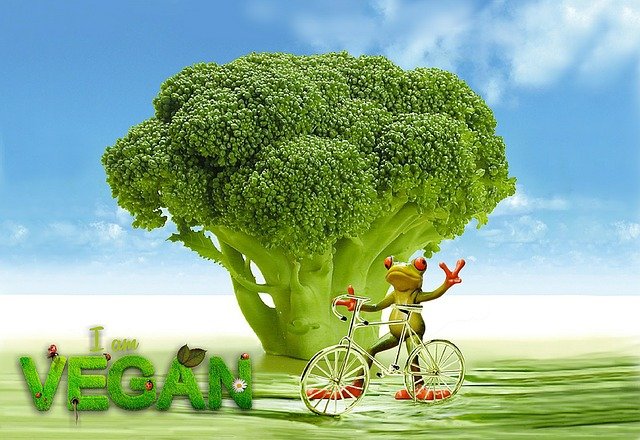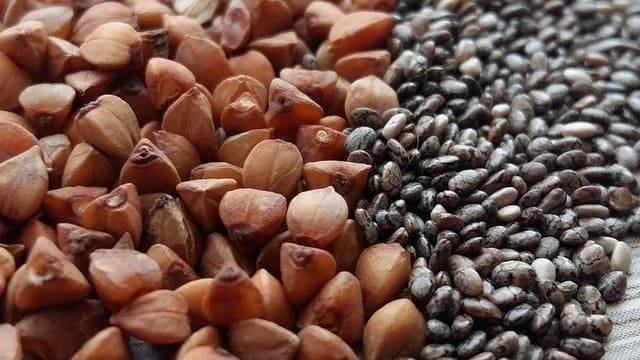A vegan diet means (well up to a lot) that a person can't consume proteins from the same sources that an omnivore. An omnivore is a person who eats both animal products such as vegetables.
However, there are many plant sources of protein that vegans can consume. Fruits, nuts, grains and legumes are sources of protein and contain additional nutrients that are beneficial to the body. Some vegetables and seeds also contain high levels of proteins.
In this article we will see how many proteins you need a person, why they are important and which vegan foods are good sources of these proteins.
How many proteins you need people?
The protein needs of a person are determined by various categories, such as age, sex, weight, and physical activity.
A person quite active, or someone who wants to build muscle you may need more protein per day. An article published in the Journal of the International Society of Sports Nutrition recommends from 1.6 to 1.7 g per day for strength athletes and 1.2 to 1.4 g per day for the resistance.
In addition, pregnant women should consume more proteins per day and in a period of lactation should increase their daily intake of protein in 10 %.
Sources-vegan protein
There are many foods that are good sources of protein, vegan, as.
Whole grains
Whole grains are grains that contain the entire core, which means that the grain is whole. Many whole grains are a good source of protein.
Quinoa
When cooked, quinoa contains a reliable source of 4,38 grams of protein per every 100 grams. A cup of quinoa, cooked contains 7,45 grams of protein.
Raw oatmeal
The raw oatmeal contains a large amount of protein, of 13.2 grams per 100 grams. A cup of uncooked oats contains 10,7 grams of protein. However, you must soak the oats before you eat it to make it more digestible.
Seitan
The seitan is not a whole grain, but a meat substitute made of wheat gluten. The high gluten content makes it not suitable for people with celiac disease or gluten intolerance.
Fried seitan is a reliable source of 11,28 g of protein per 100 g.
Spirulina
Spirulina is an algae blue-very rich in protein. A tablespoon of spirulina, of about 7 grams, contains 4,02 grams of protein from a reliable source, that is by 57.5 grams per 100 grams.
Vegetables
Some vegetables are a good source of protein, for example
Broccoli
Although the broccoli does not contain many proteins by itself, can increase the levels of proteins as part of the diet. Raw broccoli contains 2,82 grams of protein per 100 grams and to 2.84 grams of protein per every 100 grams when cooking in oil. A cup of raw broccoli contains only 2,54 grams of protein, while a cup of cooked broccoli contains 4,54 grams.
Mushrooms
When they are cooked with butter, mushrooms contain 3,74 g of protein per 100 g and 5,98 g per cup.
In addition, the micoproteína is a source of protein derived from fungi. People often use the micoproteína in the meat substitutes, this contains 11 g of protein per 100 g.
However, some products that contain micoproteína also contain eggs, which makes them non-vegan. You have to be careful to check the ingredients of a dish that contains micoproteína before you eat it.
Vegetables
Some legumes, and vegetables are good sources of protein, for example
Lentils
Once cooked, the lentils contain 9,02 g of protein per 100 grams and are a reliable source. Half a cup of cooked lentils contains 8,95 g of protein.
Chickpeas
Chickpeas, also known as chickpeas, contain 8,86 g of protein per 100 g. A cup of chickpeas contains 14.5 g of protein.
There are many dishes that use chickpeas as an ingredient, such as curry and humus. The hummus is also a good source of protein, as it contains 8,18 g per 100 g.
Peanuts
Peanuts are very rich in proteins, as they contain of 25.8 grams of protein per every 100 grams. One ounce of peanuts contains 7,31 grams.
In addition, the peanut butter contains 22.5 grams of protein per 100 grams, and 7.2 grams per 2 tablespoons.
Soy
People use soy to make many products, such as tofu and tempeh. These products are ingredients that are rich in protein in many dishes.
The soybean itself contains 12,95 grams of protein per 100 grams of reliable source when it is raw and 16,92 grams of reliable source when it is cooked. Half a cup of soy, raw contains 16,6 grams of protein, while a half cup of soybeans, cooked contains 15,65 grams of protein.
The fried tofu contains 18,81 grams of protein per every 100 grams.
Once cooked, the tempeh contains 19,91 grams of protein per 100 grams, that is to say, a portion about.
Seeds and nuts
Many nuts and seeds are a valuable source of proteins, among them.
Chia seeds
Chia seeds are rich in protein, as they contain 18,29 grams for every 100 grams of a reliable source. A portion of 20 g contains 3,65 g of protein.
Almonds
Raw almonds without salt are another food rich in proteins, as they contain 20,33 g per 100 grams of product.
The almond butter contains 20,96 grams of protein per 100 grams and 6,71 grams per serving of 2 tablespoons.
Hemp seeds
Hemp seeds are a good source of protein with 31,56 g/100 g, a reliable source. Three tablespoons of hemp seeds contain 9,47 grams of protein.
Why is it important to the protein?
Protein is an important nutrient that is found in many foods. Proteins provide the body with energy and are essential for the body.
- Appropriate growth and development
- Builds and repairs cells and tissues of the body
- Hair, skin, nails, muscles, bones, and internal organs
- Almost all body fluids
- Many processes of the body, including the clotting of the blood
Are all proteins created equal?
The proteins contain chains of smaller units called amino acids. The order of amino acids determines the structure and function of the protein.
There are 20 types of amino acids, which can be divided into two categories.
- Essential amino acids. There are nine essential amino acids that the body can only be obtained from food.
- Non-essential amino acids: The body can produce these amino acids through the consumption of essential amino acids or by the decomposition of proteins in the body.
The proteins derived from different foods are also classified in different categories.
- Complete proteins: these Are foods that contain all of the permitted quantities of essential amino acids. Foods such as quinoa, soy products and the micoproteínas are sources of complete proteins.
- The deficient proteins are foods that contain only some of the nine essential amino acids. Nuts, legumes, seeds and vegetables are protein deficient.
- The complementary protein are sources of incomplete proteins, and when they are consumed in a meal or in meetings during the day, combine to provide the nine essential amino acids. When you eat peanut butter with whole wheat bread, you get complete proteins.
Can anyone eating too much protein?
It is possible that a person consumes too much protein in your diet. Studies show that, for most people, consuming more than 2 g/kg / day can cause health problems in the long term.
People who consume too much protein in their diet may experience the following symptoms.
- Intestinal discomfort
- Excess amino acids in the blood
- Excess ammonia in the blood
- High levels of insulin
- Dehydration
- Irritation
- Nausea
- Diarrhea
- Liver and kidney failure
- Fatigue
- Headache
- Seizures
- Increased risk of cardiovascular disease
The excessive consumption of protein may also increase the risk of developing
- Diabetes
- Cancer
- Osteoporosis
- Osteoporosis
Summary
There are many sources of protein for vegans. It is important that a person consumes a good combination of protein sources. The amount of protein that you need a person you can depend on the age, sex and activity level.
Can you help us to share?
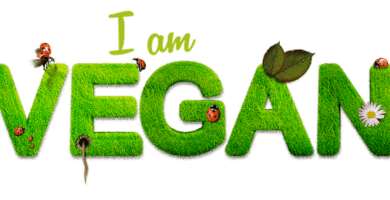
List of Vegan Ingredients
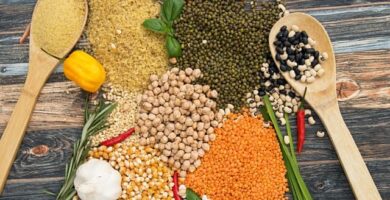
What exactly can't vegans eat?

Ways to practice vegan activism
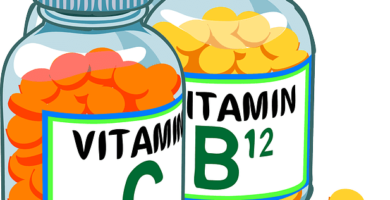
Vitamin B12 and Veganism

Veganism as a lifestyle
